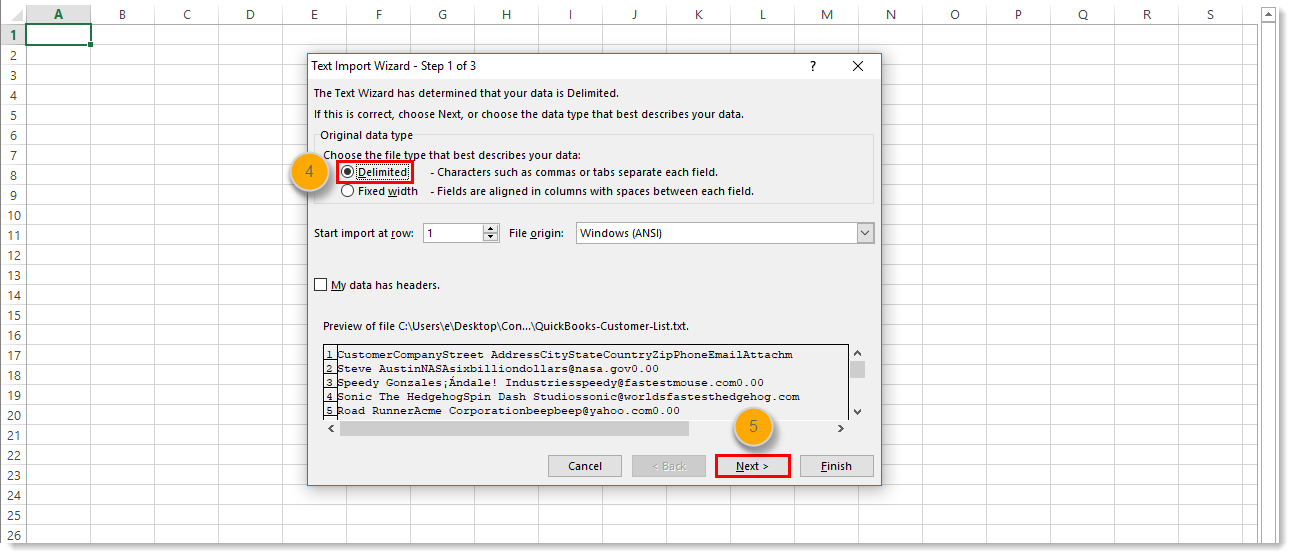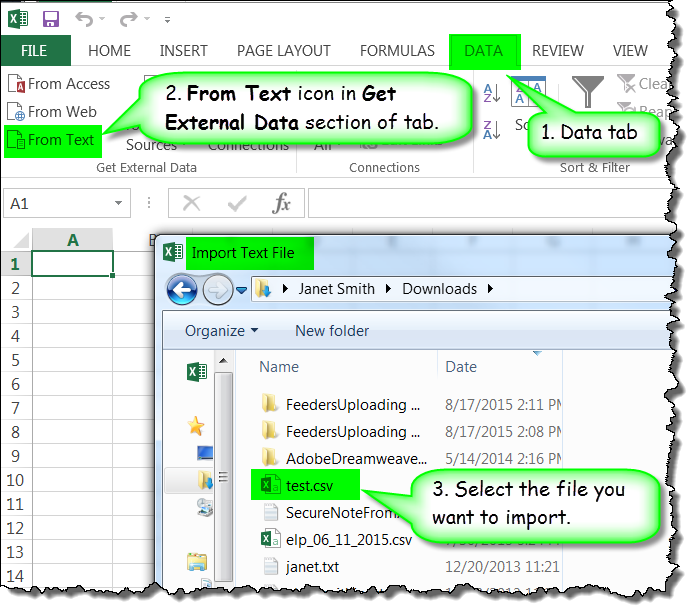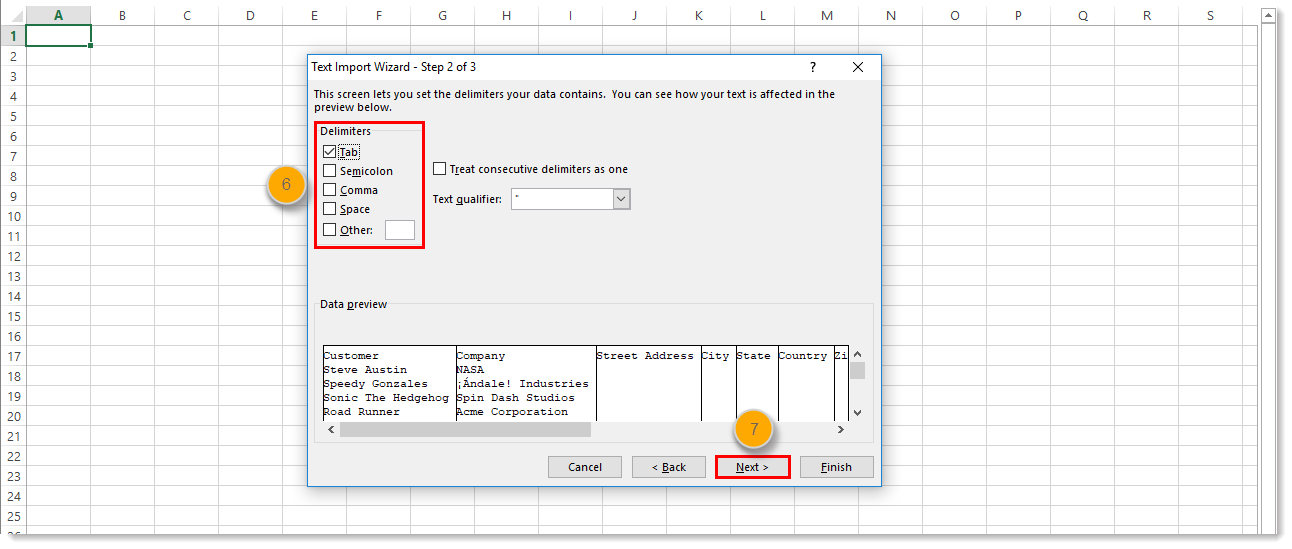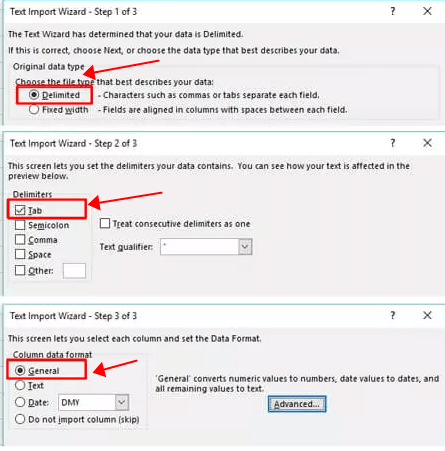

- #EXCEL TEXT IMPORT WIZARD TURN OFF HOW TO#
- #EXCEL TEXT IMPORT WIZARD TURN OFF CODE#
- #EXCEL TEXT IMPORT WIZARD TURN OFF ZIP#
#EXCEL TEXT IMPORT WIZARD TURN OFF CODE#
When you are looking to implement this code in your own workbook, it would be good to make sure that the user has selected the correct file. Len(txtFileNameAndPath) - InStrRev(txtFileNameAndPath, "\"))

ImportingFileName = Right(txtFileNameAndPath, _ 'Extracts only the file name for reference later 'You don't want the sub continuing if there wasn't a file selected 'Sets the associated filters for types of files 'Enable this option if you want the use to be able to select multiple files Set fd = Application.FileDialog(msoFileDialogFilePicker) This is helpful as we move to the QueryTable portion because setting variable such as the file path, and the file name then makes the QueryTable code more dynamic. The below first half of the subroutine opens up a FileDialog box that enables the user to select one txt file, and then at the bottom of this excerpt of code, there are some helper functions that for instance: extract just the file name.

The QueryTable process is predicated on the raw data not changing in format or structure.Option 2: Use QueryTable to import the external data directly into the existing workbook.This would be prone to errors and require a savvy end user This process is fairly consistent across Excel’s external data import tools, however the open functionality does not readily translate into a macro unless you were to have a separate file open that could then be referenced to copy the data values.This will walk you through steps defining for Excel how the data file is structured including the delimiters used, where to start the import, characters used for delimiting, and finally the column by column data format assignment
#EXCEL TEXT IMPORT WIZARD TURN OFF HOW TO#

When you are importing data into excel from an external data source, you have a couple of options: Every month, there is new data released, and therefore, everytime the end user opens the workbook and executed the macro, it would be a best practice to prompt them to import new data. Let’s say that data import is a step in a larger process rather than the end game and you’re building a sales forecasting model to analyze monthly raw sales data, and then make predictions about future sales goals.
#EXCEL TEXT IMPORT WIZARD TURN OFF ZIP#
For instance, if you are importing a text file with city, states, and zip codes, you may run into an issue during your data review because most likely, Excel will have dropped the leading 0’s from the zip codes. Raw data import processes are very sensitive and finicky based on the type of data that is being imported and the structure of that data. Botching a data import can ruin all subsequent data analysis.


 0 kommentar(er)
0 kommentar(er)
